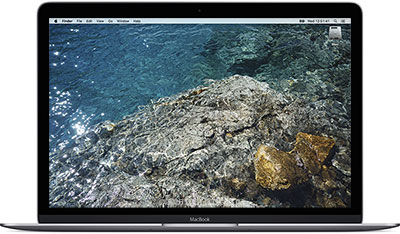
$220 SAVE $130 = 37.0% Western Digital 16.0TB Western Digital Ultrastar DC HC550 3.5-in… in Storage: Hard Drives
|

|

|

|

|

|

|

|

|

|
2016 Apple MacBook: CPU Utilization during Network File Copying
Related: CPU cores, ethernet, laptop, MacBook, Macs, networking, USB, USB-C

Get Apple Early 2016 MacBook at B&H Photo. MPG recommends MacBook models with 512GB SSD and ideally, MacBook models with 512GB SSD and 1.3 GHz CPU.
For travel: USB-C to USB adapter or Apple USB-C Digital AV Multiport Adapter.
BEST for desktop use, the OWC USB-C Dock.
TEST UNIT: 2016 MacBook 1.3 GHz / 8GB m/ 512GB.
The dual-core 1.3 GHz CPU in the (fastest) 2016 MacBook is severely underpowered, having no ability to cope with more than very basic computing—a few simple tasks at a time.
As shown below, a network copy is in progress using gigabit ethernet via the OWC USB-C Dock. Performance is excellent, hitting the speed limits of gigabit ethernet when large files are being copied.
Update: several readers reported seeing lower CPU usage on other machines. That’s quite possible: faster CPUs, different mix of files, something else involved—but note that nearly all the CPU is kernel time (red), which shows that whatever was happening, it is happening at a low level in the OS (self evident in the %CPU column also as “kernel_task”. During this same 240GB file copy, the CPU usage did drop to about half of what is shown at times, so there was some variability.
With the fastest available 2016 MacBook CPU, the file copy consumes all available CPU cycles*, which means that when doing anything else with a network file copy in progress, response will be sluggish, because the CPU load is shared between the file copy and whatever the user is doing and all background tasks (such as Spotlight/mds). [This CPU overhead has nothing to do with the Dock, it is inherent to Apple’s ethernet networking stack.]
This is why the MacBook is good for web browsing and email and not much else unless that “else” is all that is happening—there just aren’t many CPU cycles to go around. The 1.3 GHz CPU cores on the MacBook are far from speedy, and there are only two of them. By comparison, a similar operation on a MacBook Pro Retina uses 1 of 4 hardware CPU cores, leaving 3 of 4 hardware CPU cores for other uses.
* Full utilization is 200% usage; more than that (up to 400%) means all 4 virtual cores, which are worthless for performance.

Seagate 22TB IronWolf Pro 7200 rpm SATA III 3.5" Internal NAS HDD (CMR)
SAVE $100

 diglloydTools™
diglloydTools™

